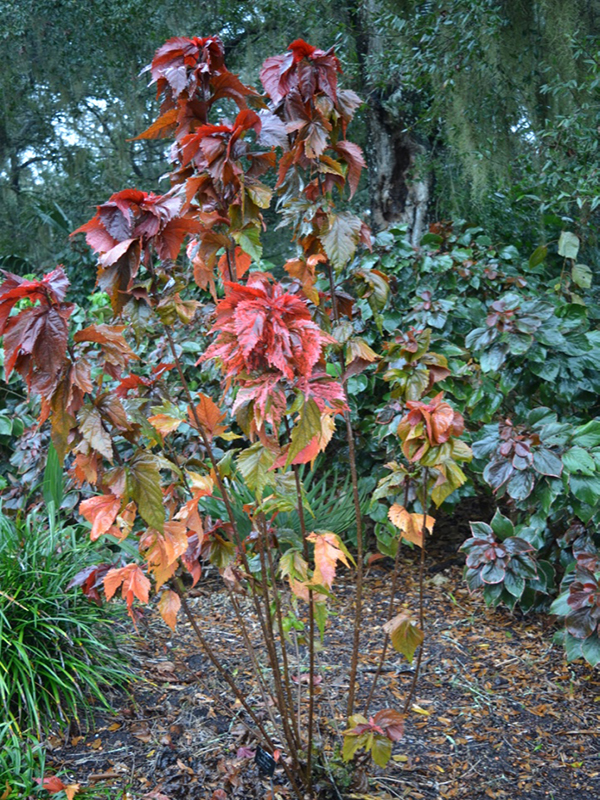
Perennials, Tropicals > Acalypha > Acalypha wilkesiana > Acalypha wilkesiana 'Raggedy Ann'
Acalypha wilkesiana
'Raggedy Ann'
Raggedy Ann Copperleaf, Raggedy Ann Jacob’s Coat
Origin: The species is from Fiji Islands, in the South Pacific.
| Family |
| Euphorbiaceae |
| Genus |
| Acalypha |
| Species |
| wilkesiana |
| Cultivar |
| 'Raggedy Ann' |
| Category |
| Perennials, Tropicals |
| Type |
| Shrub (evergreen) |
| Synonyms |
| Acalypha amentacea, Acalypha tricolor |
| USDA Hardiness Zone |
| 10a - 11 |
| Canadian Hardiness Zone |
| Requires cold season protection under glass. |
| RHS Hardiness Zone |
| H3 - H1c |
| Temperature (°C) |
| from -5 to 10 |
| Temperature (°F) |
| 23 - 50 |
| Height |
| 0.9 - 3.6 m |
| Spread |
| 0.9 - 2 m |
Photographs
Description and Growing Information
Flowering Period
| General Description |
| An evergreen shrub that averages 3 to 3.6 metres in height with a 1.8 to 2 metre spread. It is multi-stemmed and has an upright, sprawling habit. It has a fast growth rate. |
| Landscape |
| Containers, specimen and background plants. |
| Cultivation |
| Grow in full sun to part shade in light, well-drained, average to moderately-fertile sand to loam. |
| Growth |
| Fast |
| Pests |
| Scale insects, spider mites, whiteflies, mealybugs, downy mildew, powdery mildew, rust leaf spots, and fungal root rot. |
| Habitat |
| Tropical and subtropical rainforest, dry rainforest and vine thickets. |
| Bark/Stem Description |
| The stem is erect with many branches. The branches have fine hairs. It has a closely arranged crown. |
| Leaf Description |
| Leaves are evergreen, ovate in shape, an average of 12 - 15 cm long, alternate in Acalypha wilkesiana 'Raggedy Ann' foliage, and simple with ragged, saw-toothed, lobed margins. New leaves are a lighter copper with older leaves a burgundy or maroon with splotches of red, pink, or light copper. It has pinnate veins. |
| Flower Description |
| The reddish copper flowers are small, borne in axillary catkins that are 12 - 15 cm long. |
| Fruit Description |
| Fruit is capsules that is not often seen. |
| Colour Description |
| Leaves are coppery green, mottled and streaked with copper, red and purple. Flowers are red. |
| Notable Specimens |
| Harry P. Leu Gardens, Orlando, Florida, United States of America. |
| Propagation |
| By stem cuttings. |

